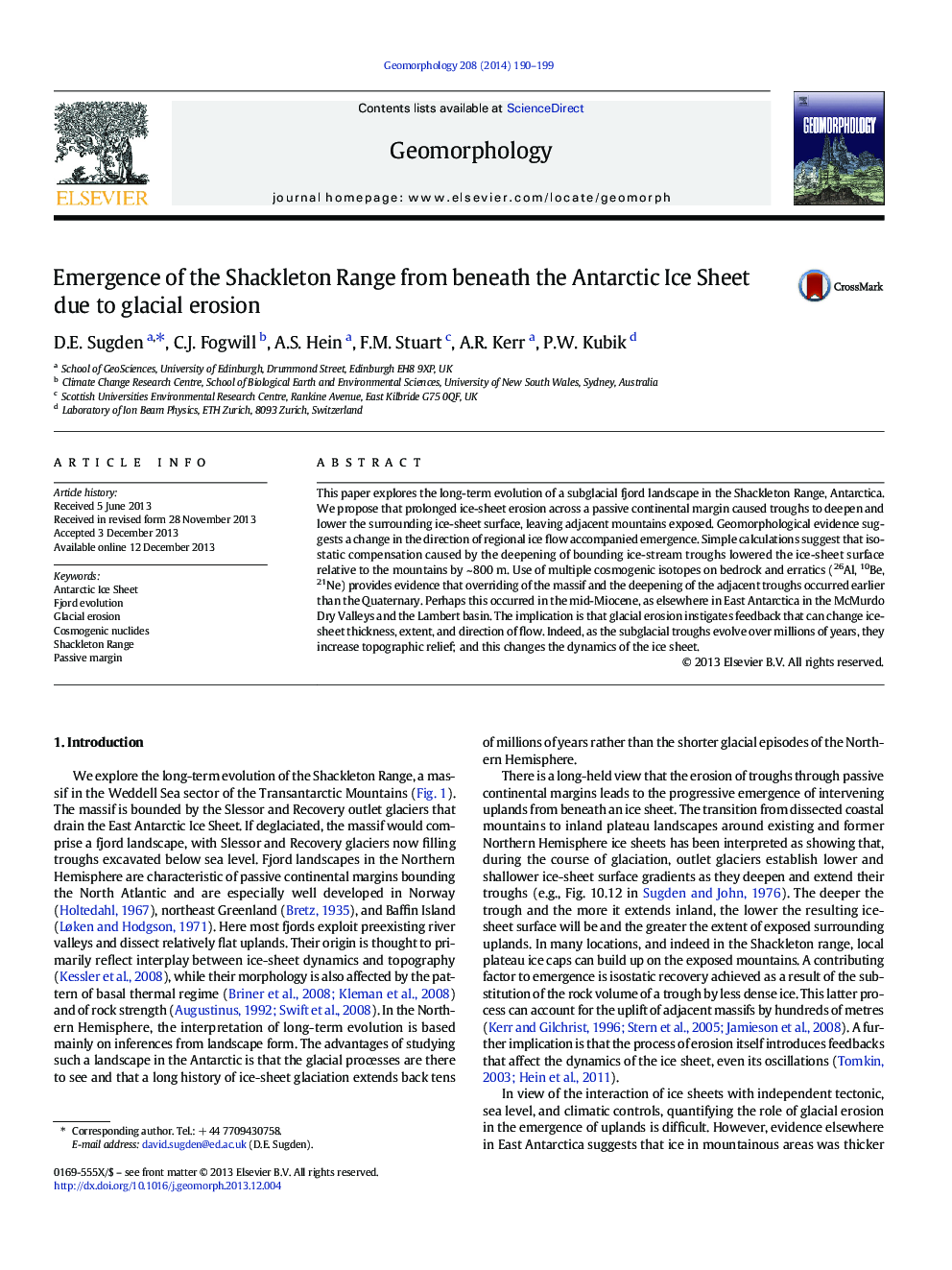| Article ID | Journal | Published Year | Pages | File Type |
|---|---|---|---|---|
| 4684616 | Geomorphology | 2014 | 10 Pages |
•Testing hypothesis of Antarctic landscape evolution with cosmogenic isotopes.•Erosion of troughs by ice sheets exposes intervening mountain massifs.•Glacial erosion changes the dynamics of the ice sheet.•The mountains emerged from the ice sheet by 600–1000 m in > 14 Ma.•Transition from fluvial to glacial landscape in Transantarctic Mountains.
This paper explores the long-term evolution of a subglacial fjord landscape in the Shackleton Range, Antarctica. We propose that prolonged ice-sheet erosion across a passive continental margin caused troughs to deepen and lower the surrounding ice-sheet surface, leaving adjacent mountains exposed. Geomorphological evidence suggests a change in the direction of regional ice flow accompanied emergence. Simple calculations suggest that isostatic compensation caused by the deepening of bounding ice-stream troughs lowered the ice-sheet surface relative to the mountains by ~ 800 m. Use of multiple cosmogenic isotopes on bedrock and erratics (26Al, 10Be, 21Ne) provides evidence that overriding of the massif and the deepening of the adjacent troughs occurred earlier than the Quaternary. Perhaps this occurred in the mid-Miocene, as elsewhere in East Antarctica in the McMurdo Dry Valleys and the Lambert basin. The implication is that glacial erosion instigates feedback that can change ice-sheet thickness, extent, and direction of flow. Indeed, as the subglacial troughs evolve over millions of years, they increase topographic relief; and this changes the dynamics of the ice sheet.
